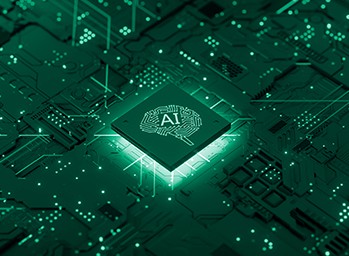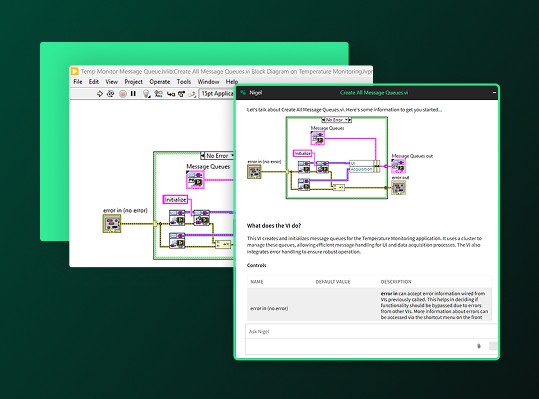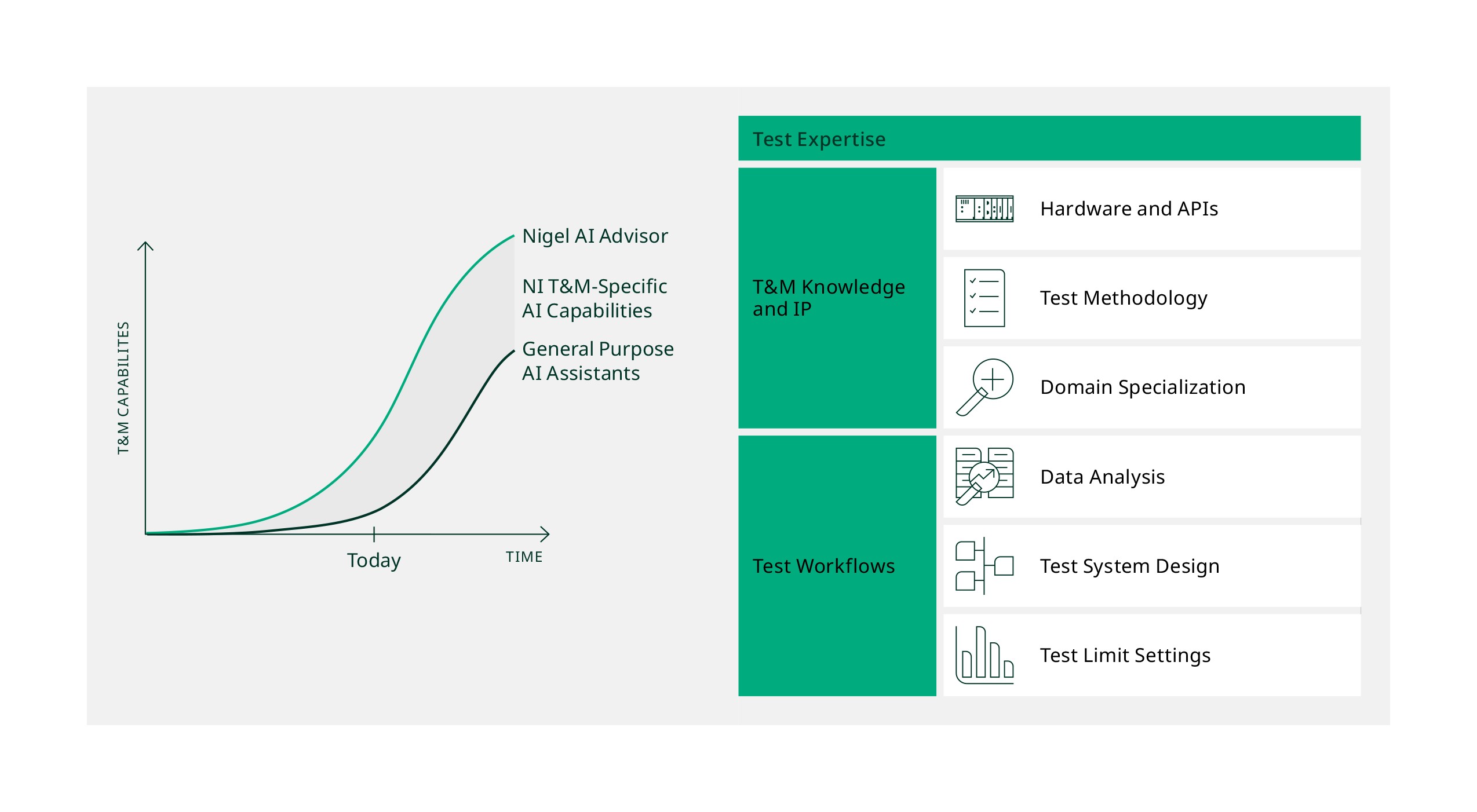
AI and the Dot-com Bubble: Learning from the Past to Shape the Future
Is AI the next dot-com bubble? Discover how past lessons can guide today’s innovation for a future shaped by intelligent technologies.

Artificial Intelligence represents an unprecedented technological advancement that will fundamentally change the way we engineer. It promises a dramatic change in our pace of development, our depth of product insight, and the way we collaborate with our peers. As test engineers, we are the guardians of our product’s quality, safety, and reliability. We must apply AI technology responsibly, ensuring integrity, security, and human decision-making, all while pushing our capabilities and productivity to new heights.


The Nigel™ AI Advisor is purpose-built AI specifically for test and measurement. It is integrated natively into NI software environments to aid in development and enhance your productivity.

Our Commitment
Our approach to AI is different because your needs as test engineers are different from other engineering disciplines. We take powerful AI models and augment them with our deep expertise to create solutions that serve you. This technology is built into our industry-leading test software to minimize churn between tool chains, delivering new capabilities and improved productivity to our users.
In a 2023 survey by the Financial Times Group, just 44 percent of test managers said they were performing well against their priority quality metrics. This statistic is alarming, as it highlights managerial pressures and frustrations. Many teams are rushing to drive meaningful changes to bridge the widening gap between engineering complexity and resource capacity.
Meaningful change requires clear focus, sound technological decisions, and a willingness to chart a new path forward. That same survey shows that leading test organizations are investing in AI, with 79 percent planning to embrace this technology over the next five years.
Change on this scale naturally brings uncertainty and anxiety to many, but it also heralds huge opportunity for adoptees to differentiate themselves by delivering a step-change in productivity within their teams. Confidence in the adoption of any new technology comes from strong foundational processes that can adapt to change without losing identity, open tool chains that can incorporate evolving technology with minimum churn, and strong partnerships with technology leaders who can advise on implementation priorities.
Although AI is undeniably transformative and will continue to evolve, test leaders have more questions than answers about this technology: What’s next? What will the technology look like five years from now? What are the costs? Which model should we use? How do we protect our IP? How do we measure success?
Although their concerns have merit, this “analysis paralysis” is preventing engineering leadership from taking advantage of what AI has to offer. Fortunately, every organization can take essential steps right now. These actions don’t require massive investment and lay the foundation for future success with AI adoption.
Effective and meaningful adoption of AI within the test and measurement industry will always demand a coherent, strategic approach to managing an immense volume of test data. Historically, this treasure trove of insights has been discarded or underutilized as an operational byproduct rather than a strategic asset.
However, we are now racing to update data management capabilities to support this AI-driven transformation. By implementing an effective data management strategy now, test organizations can position themselves to quickly adopt AI advancements as they emerge.
First, get a firm understanding of your data model.
By understanding your data model and ensuring you’re collecting the right data, you’ll have a firm foundation for adoption of AI tools.
To fully reap the benefits of AI, good measurement data must also have more than just what the instrument measures. To perform anomaly detection or other root cause analysis, the context of how and where that measurement was taken is as important as the signal data itself. By aggregating environmental conditions, asset health information, code versions, and operator data into a holistic digital thread connected to a particular DUT, we can characterize a full understanding of any given measurement. Using NI software like TestStand paired with SystemLink can provide the context needed to quickly take the proper actions.
For organizations to take full advantage of AI, they must have an intentional, structured strategy for ensuring that extensive amounts of AI-ready data are accessible and meaningful. Disciplined collection, consistent schemas, and organized, centralized storage will enable organizations to transform an abundance of raw information into well-structured data sets—the fuel that drives effective AI and delivers more meaningful insights.
Engineers are used to working at levels of abstraction, trusting specialists to create platforms they can build upon to deliver systems and products. Using AI technology is no different.
Test and measurement applications stand out from others due to unique complexities that are introduced by sitting at the boundary of the physical and digital worlds. Streaming real-world signals into a software program (often quickly and from multiple sources) creates requirements such as parallel processing, high-performance waveform data visualization, deployment to deterministic targets, and more. Systems also rarely work in silos as product quality decisions are made by comparing results from multiple test runs, from different systems, taken at different times.
When addressing test and measurement challenges, look for technologies like the NI hardware and software platforms and the Nigel AI Advisor that are designed for testing and built by groups who have the necessary technology and application knowledge. This technology advantage ensures you can focus on tackling high-stakes product challenges, rather than puzzling over how to shoehorn powerful yet generic AI models into sensitive test environments and specialized workflows.
Access to AI for test and measurement will fundamentally change the way engineers develop test systems. From the first requirements document to the final published report, AI will simplify the complexity of development, providing the information you need to make sound decisions and take time-consuming tasks off your to-do list, so you can focus on your area of expertise.
Eventually, AI will help you design complete test systems. As experts in the test and measurement field, we are charging toward that future. General-purpose AI tools will drive investment into the underlying models, and by building on top of these technologies, the Nigel AI Advisor will inherit their increases in intelligence and power. But general-purpose models alone will not satisfy the complex needs of test and measurement users.
Because of our decades of test experience and a foundation of well-organized, contextualized measurement data, Nigel will continue to evolve as a powerful, test-specific intelligence.

